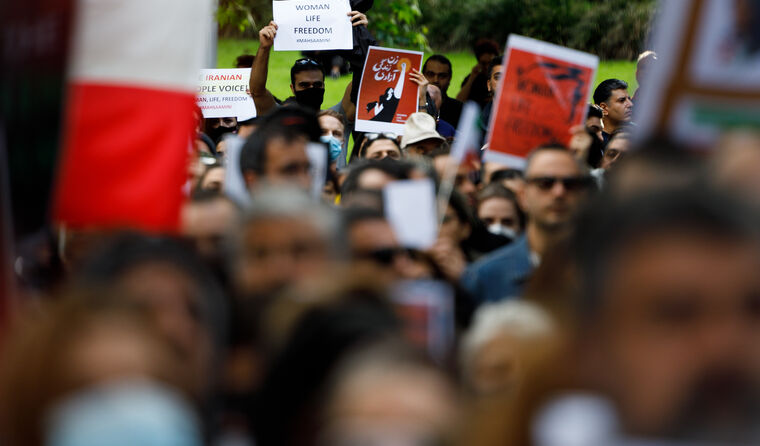From the West’s perspective, what will be the outcome of the people’s protests?
From the West’s perspective, what will be the outcome of the people’s protests? According to Iran Gate, the rightful protests of the Iranian people have entered their third month, and the Western media’s attention to these protests has been unprecedentedly extensive. The daily and even hourly developments in Iran have become a significant part of the prominent news in these media.
The media coverage of the Iranian people’s protests, and particularly the heightened importance of Iranian women in recent developments, has influenced the European and American politicians’ and governments’ approach to official interactions with Iran.
This transformation in official interactions, as we have mentioned in other reports, has severely limited Iran’s diplomatic breathing space. There is no doubt that Iran’s partnership in the aggression against Ukraine and its provocative actions in the Persian Gulf have also contributed to this serious and problematic constraint. Meanwhile, a series of new statements and comments from Western officials have reflected their latest assessments of the developments in Iran, the current state of the people’s protests, and the future of the people and the ruling system in Iran.
The people’s protests are unprecedented.
One of the most important pillars in the analyses and statements of American officials is their emphasis on the unprecedented nature of the current protests and their significant difference from previous protest periods in past years. This emphasis can be seen in the speeches of the U.S. President and Secretary of State, and even Jake Sullivan, Joe Biden’s National Security Advisor. It is important to note that this specific understanding has influenced Western officials.
In recent months, the West has demonstrated a much higher understanding of Iran and what is happening in our country. The high value of Iranian media interaction in official media and social networks, and the much better and indeed different attention of American and European media to Iran’s developments, have contributed to a better understanding by American and European officials of the realities in Iran.
The demands of the protesters have been expressed seriously and transparently. Iran’s regime’s ability to hide the realities in Iran is much lower than in previous instances, such as the protests in November or what happened in Khuzestan in 2019. Now, American officials, more explicitly and seriously than all their allies, emphasize the importance of this protest period. The unprecedented nature of these protests has elevated the importance of this issue above any other matter related to Iran, even overshadowing the JCPOA and the Vienna agreement.
America and support for the people.
The U.S. government, which considers the people’s protests in this period unprecedented and unparalleled, has not yet found a precise strategy to support the people without endangering political activists inside Iran. It was natural that the promise to help the Iranian people gain better access to internet services and reach social networks, under current conditions and given the available resources, did not offer much. Apart from this promise, pressure on the Iranian government, smart and modern sanctions against officials, and special restrictions and penalties have been the main strategies of the U.S. and Europe.
With this particular situation, the prolongation of this process and the lack of a direct and serious means of assistance may only turn America into a mere moral supporter and encourager. Therefore, subtle developments can be seen in some of the American international policy arms, showing their efforts to achieve real support for the people. How much such efforts will come to fruition remains to be seen in the near future.
Recent statements by American officials show that at least as a first step, creating a serious diplomatic constraint for Iran and cutting off direct negotiations is a strategy they are pursuing, and its impact is becoming evident.
Iran’s regime is not on the verge of collapse.
Avril Haines, the Director of National Intelligence in the U.S., in her latest remarks, once again supported the Iranian people’s protests while stating that Iran’s regime is not on the brink of inevitable collapse due to these protests. According to U.S. and Israeli assessments, Iran’s regime is more stable than to create the perception among the Western public that Iran’s regime has weakened or is on the verge of collapse.
Naturally, given the Biden administration’s policy of non-interference in Iranian politics and the lack of any intention for regime change in their policy, they speak much more conservatively than their Israeli counterparts on this matter. General Amit Saar, one of the most prominent officials of the Israeli Military Intelligence, has emphasized that Iran’s regime is too powerful to be overthrown by these protests. He believes that Iran’s control, monitoring, and security structures are strong enough to easily handle the protests.
In this context, other articles have also been published in Iran Gate.
- Where are the protests headed? Will Iran become like Venezuela?
- People’s protests and the increased understanding of Iranians by the West.

